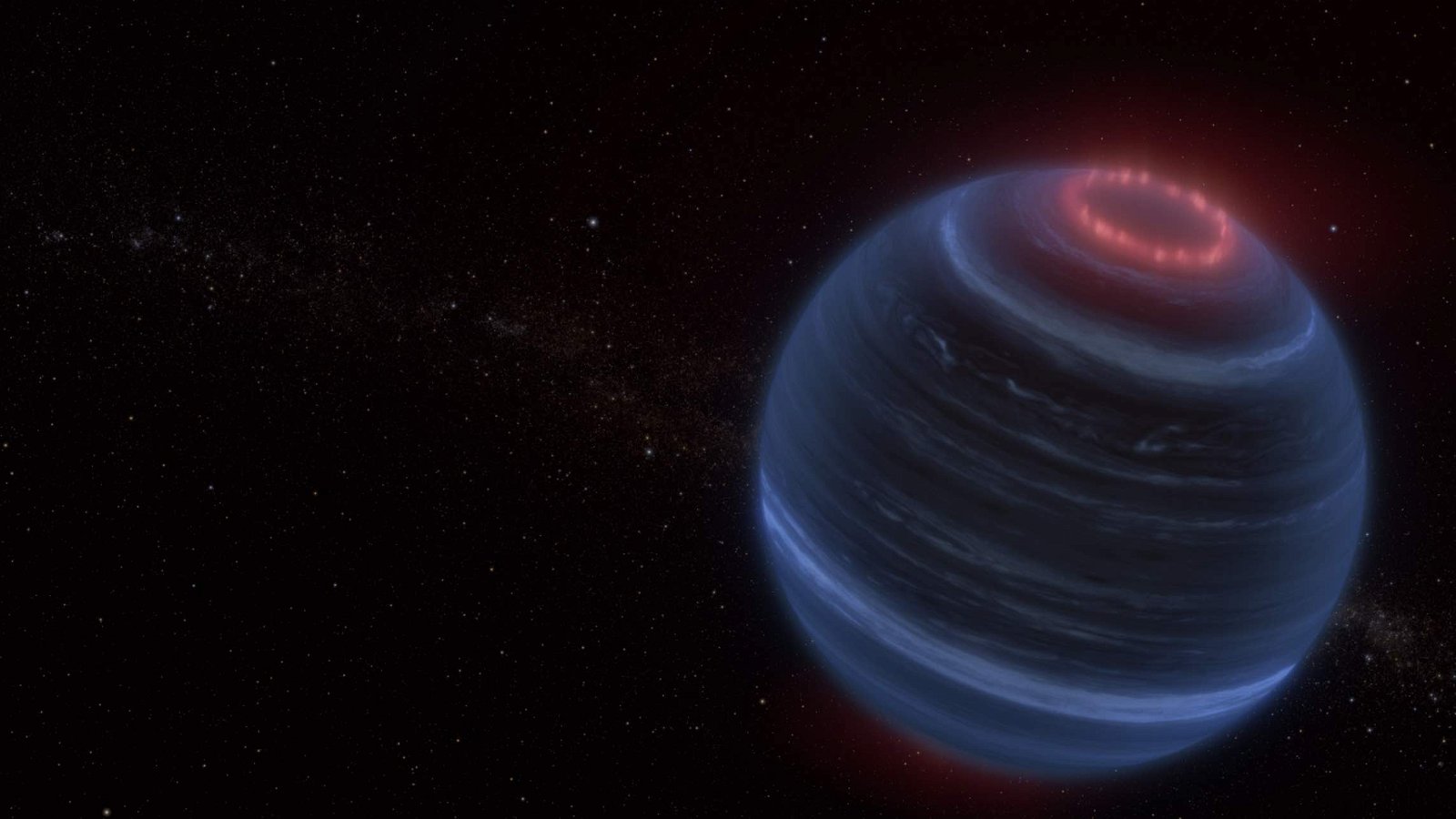Astronomers have detected emissions from a brown dwarf with help from the James Webb Space Telescope that suggests it may produce aurorae like those seen near Earth’s poles, and that it could also possess an active moon in its orbit.
Brown dwarfs are larger than planets but possess less mass than stars and appear frequently throughout the universe. Of the many thousands known to exist, last year, a study led by research scientist Jackie Faherty with the American Museum of Natural History investigated a dozen of these celestial objects with the powerful eye of the Webb telescope.
Located approximately 47 light years from Earth, one of these brown dwarfs, CWISEP J193518.59–154620.3 (also known simply as W1935), possesses a surface temperature of about 400° Fahrenheit and a likely mass of somewhere between six and 35 times that of Jupiter.
During their studies, Faherty and her team found that W1935 was unlike other brown dwarfs they had observed; specifically, it appeared to be emitting methane. This is unusual since methane is most often associated with larger planets like gas giants.
“We were confused about what we were seeing at first but ultimately that transformed into pure excitement at the discovery,” Faherty said.
The initial detection of methane emanating from W1935 was reported in January, baffling astronomers at the time since the object is relatively cold and lacks any host star to provide its upper atmosphere with the energy that usually drives such methane emissions.
Faherty and her team relied on computer modeling in their observations of W1935, which revealed that it also appears to possess a temperature inversion, which is fairly common for planets orbiting stars. However, without any external heat source, it seemed odd that W1935 would possess this characteristic due to its isolation.
Ben Burningham, a researcher from the University of Hertfordshire and co-author of a new paper describing the team’s findings, says the team was “pleasantly shocked” by this discovery and went to work on trying to locate the source of the extra heat in W1935’s upper atmosphere.
Looking at our own solar system, they initially made comparisons to Jupiter and Saturn, both of which are similar to W1935 in that they emit methane and also have temperature inversions, which astronomers link to the presence of aurorae on these planets.
In other words, all evidence seemed to point to the existence of aurorae on W1935 as well. This luminous phenomenon occurs due to the interaction between high-energy particles emitted by the Sun and the magnetic fields surrounding Jupiter, Saturn, and Earth.
However, without a nearby star to contribute particle emissions that contribute to the aurorae we observe in our own solar system, scientists wondered what the cause may be on a brown dwarf like W1935.
Another factor contributing to the generation of aurorae in our solar system is volcanically active moons encircling larger planets like Jupiter and Saturn. These moons eject material into space that also interacts with their magnetic fields. Hence, it seems possible that W1935 may also possess a volcanic moon that has not yet been directly observed.
“Every time an astronomer points JWST at an object, there’s a chance of a new mind-blowing discovery,” Faherty recently said of her team’s findings.
Faherty and her colleagues’ new paper, “Methane emission from a cool brown dwarf,” appeared on April 17, 2024, in the journal Nature.
Micah Hanks is the Editor-in-Chief and Co-Founder of The Debrief. He can be reached by email at micah@thedebrief.org. Follow his work at micahhanks.com and on X: @MicahHanks.

